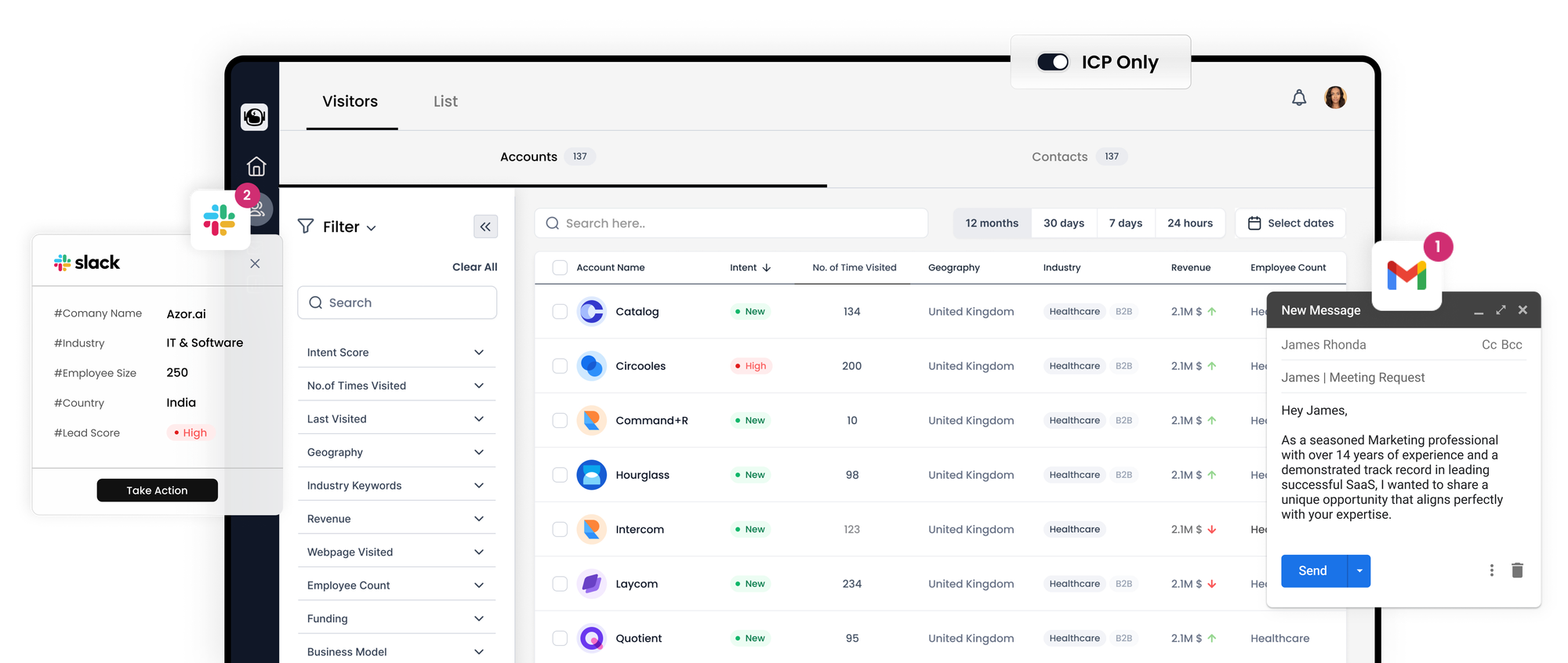Elucidating Demand Generation in Marketing

Demand generation encompasses a comprehensive array of B2B marketing and sales activities aimed at creating interest in your company’s offerings. It isn't confined to just finding existing prospects; it's about sparking interest among those who aren't yet familiar with you. Effective demand generation focuses on the challenges potential clients face, offering them solutions.

Understanding Demand Generation Marketing
Demand generation marketing is about amplifying awareness and interest in what you offer. The objective is to broaden your reach, establish your authority, and create a buzz around your brand that culminates in acquiring high-quality leads.
Demand gen isn't limited to the initial stages of finding prospects; it persists through the entire buyer's journey, from the first spark of interest to conversion and beyond, nurturing customer relationships.
To carry out demand generation effectively, alignment and transparency between your sales and marketing divisions are essential. Both teams should collaborate to pinpoint any snags in the process.
Demand Generation vs. Lead Generation
Demand generation is about widening your brand's horizon and setting up a reputation as an industry expert. Conversely, lead generation is about converting the interest you've garnered into actionable prospects.
Top Demand Generation Strategies
A robust demand generation program delivers captivating, high-caliber, authoritative content that draws in your ideal customers. Let’s review the leading tactics for your B2B marketing playbook:
1. Content Marketing
According to a 2021 survey, decision-makers value content that speaks directly to their organization's needs. Various content forms to consider for demand gen include:
- Blogs: Articles that educate your audience and boost your visibility on search engines like Google.
- Videos: YouTube content that delves into topics or product features relevant to your target audience.
- eBooks and Whitepapers: Detailed, informative content that you can offer on your site, either gated or ungated.
- Podcasts/Webinars: In-depth discussions on specific industry topics or product features, often featuring guest speakers.
- Industry Insights: Collaborations with industry influencers to co-create content and tap into their networks.
Ensure your content addresses your ideal customers' queries, regardless of the medium.
2. Account-Based Marketing (ABM)
ABM campaigns, due to their focused audience, can significantly enhance B2B demand gen. Successful ABM strategies have been linked to a rise in reputation and improved customer relationships.
ABM lets you drive demand with specific companies and individuals, yielding better outcomes. Employ ABM campaigns, email marketing, LinkedIn ads, or direct outreach for cost-effective engagement.
Best practices for ABM lead gen include:
- Using content and ABM data to construct an email list.
- Segmenting your list for targeted outreach.
- Implementing email automation for consistent communication.
- Monitoring responses to optimize your strategy.
3. Paid Advertising
Investing in ad spaces where your ideal customers frequent is a rapid demand gen method. PPC ads can position you atop Google search results for chosen keywords. Social media ads can place your brand in customers’ feeds.
Platforms like Google and Facebook provide analytics, enabling you to discern what's effective.
Tips for Enhanced Demand Generation Campaigns
Here are three universal tips for successful demand gen programs:
1. Understand Your Customer
Develop a detailed Ideal Customer Profile (ICP) to guide your demand gen strategies. The more focused your ICP, the more resonant your messaging can be.
2. Monitor Rigorously
Measure as much as possible. Analyze your results to reinforce effective tactics and discard the rest.
3. Optimize Your Website
Your website is often the first touchpoint post-content engagement. Ensure it presents your brand effectively.
Demand Generation Metrics
Your organization may prioritize different metrics, but here are three KPIs to track demand gen success:
1. Cost per Acquisition (CPA)
This measures the average cost of acquiring one paying customer and can be drilled down to specific lead sources.
2. Customer Lifetime Value (CLV)
This reflects the average net profit a customer will contribute throughout their engagement with your company.
3. Demand Gen Cycle Length
This metric tracks the average duration from lead identification to conversion.
Demand Generation Roles
Demand generation tasks are typically performed by your marketing team for early-stage activities, while sales or Customer Success teams handle lead nurturing and retention.
Demand generation managers are tasked with market research, content creation and promotion, and optimizing the customer experience with your brand.
Demand Generation Tools
A multitude of tools exists to support and improve your campaigns. To navigate these, consider curated lists of tech stacks and software designed for B2B marketing and sales, enabling you to select those best aligned with your campaign goals.
